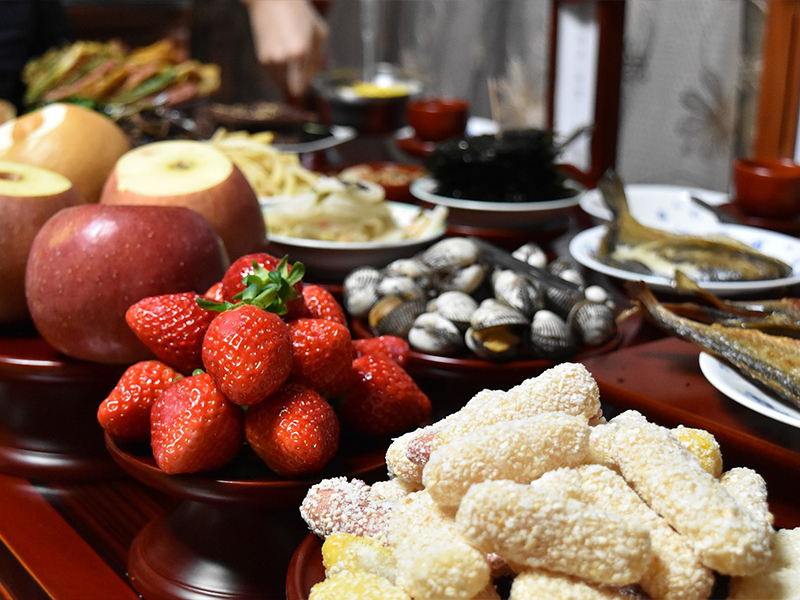Chuseok, also known as Korean Thanksgiving Day, is one of the most important holidays in Korea. It is a three-day holiday celebrated on the fifteenth day of the eighth month on the lunar calendar. Koreans generally return to their hometown to spend Chuseok with their families and perform memorial rites – commonly known as jesa – commemorating their ancestors.
“Chuseok for our family is a busy day full of meeting family members, holding memorial services and eating delicious traditional foods,” said Claire Kim (10). “Our whole family gathers in my grandparent’s house at around 7am and sit together to share stories or give life updates until the memorial service table is ready. We began jesa by bowing to our ancestors, thanking them for everything we have today and repeat several times switching out rice and hot soup for every other ancestor. Then we visit seongmyos, which are family graves. At these graves, we repeat our memorial service by placing food and bowing once again to show respect to our ancestors.”
Koreans celebrate Chuseok by making delicious food to eat with the family during the memorial ceremony. They prepare around four to five rows of Korean dishes starting from fish, beef stew, rice cake, and fruits. All members, including the younger generation of the family, often help prepare. Chuseok is a holiday where Koreans get three days to a whole week off their working schedule, but it can be a burden to some family members as the preparation can take up to a full day or two just for cooking the food.
“Preparing for Chuseok was definitely tiring,” said Yu Sung Hee, Cafeteria Manager. “Like most Korean families, we cooked our own food for the jesa table including dishes like galbeejim, jabchae, and jun. Buying all the ingredients took me around two days as I had to visit both the supermarket and the traditional market. For cooking and the preparation of the food, it took me around three days in total as some dishes required additional preparation regarding the ingredients.”
Another Chuseok tradition is the gift-giving culture in which Koreans give presents not only to their relatives but also to their friends and acquaintances to show respect and appreciation. In the past, Chuseok gifts had a tendency to be very practical, involving homemade food or drinks of some kind, but now, it is on a totally different level. With supermarkets and department stores releasing a huge variety of gift sets, gift-giving has become much costly with higher quality yet much easier where customers can simply purchase the gift and send it through delivery service.
“From a week before Chuseok, there were multiple visits by the deliveryman,” said Yoobin Lee (12). “Every time we opened the door, the size, color, and content of the gifts varied. We received all kinds of gifts starting from fresh packaged fruits to 16 cans of spam. However, I would say that my favorite was the Hangua package, which contained six different types of Korean traditional snacks. Although it was very sugary and high in calories, it was definitely appetizing. I later thanked my mom’s friend who sent this package to tell her that I really enjoyed her gift.”
As society has changed to keep up with trends and changing beliefs over the decades, many historic Chuseok traditions have faded away such as playing traditional folk games or wearing traditional clothing. However, even until this day, Koreans still happily celebrate Chuseok by spending quality time with their family eating delicious food and receiving meaningful gifts.

